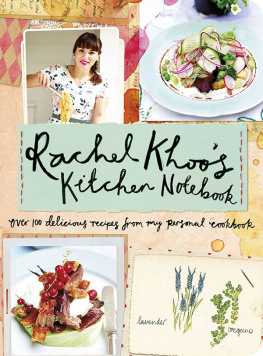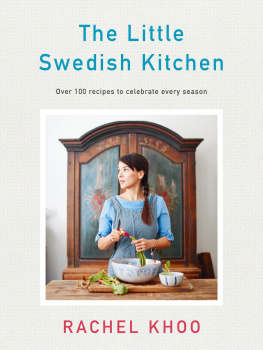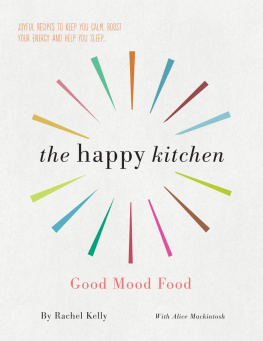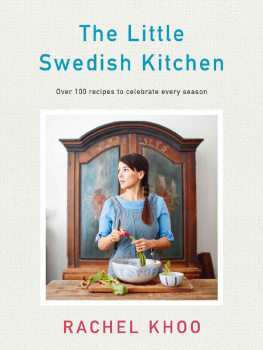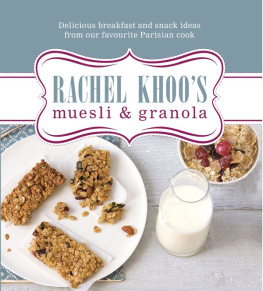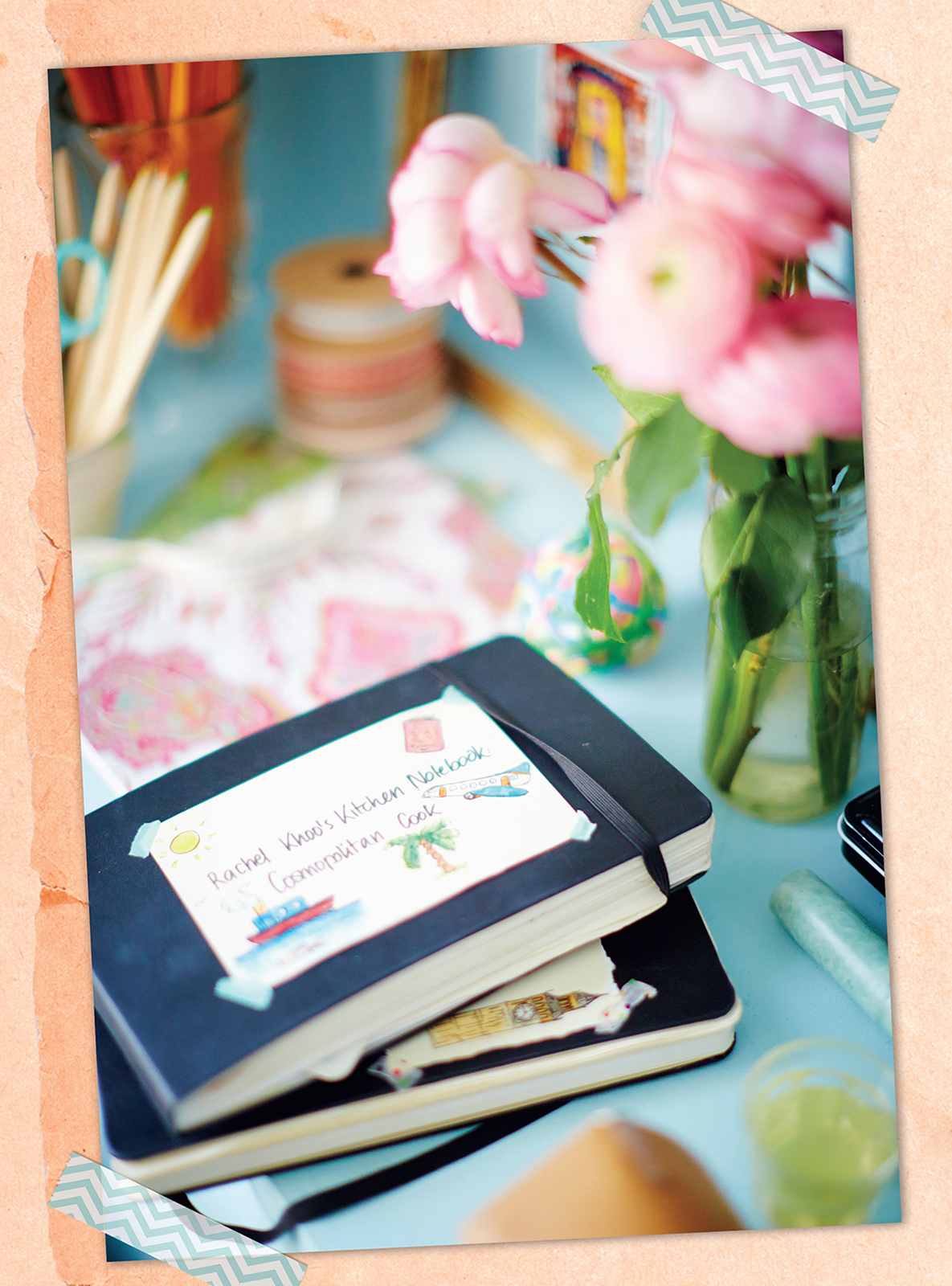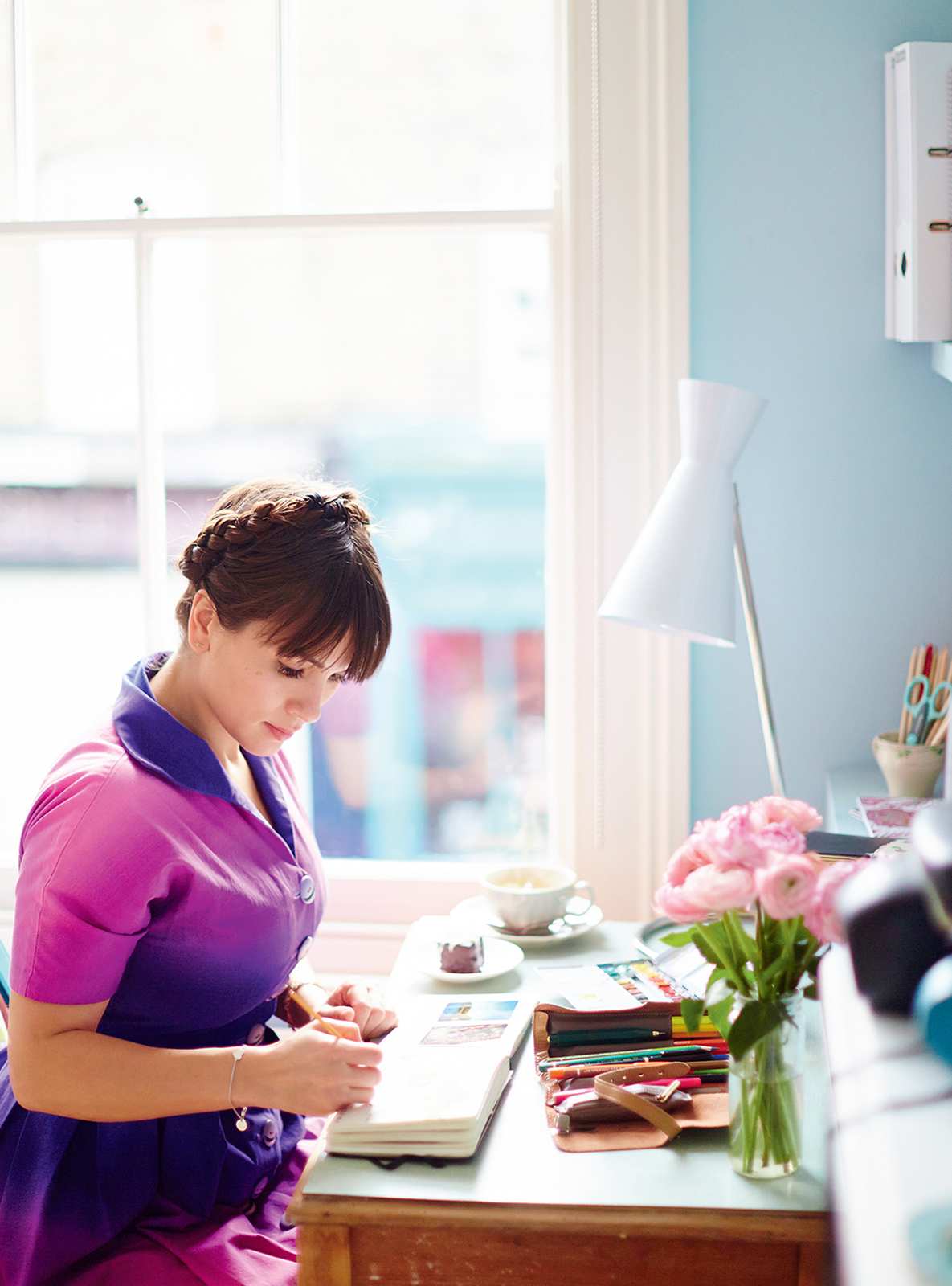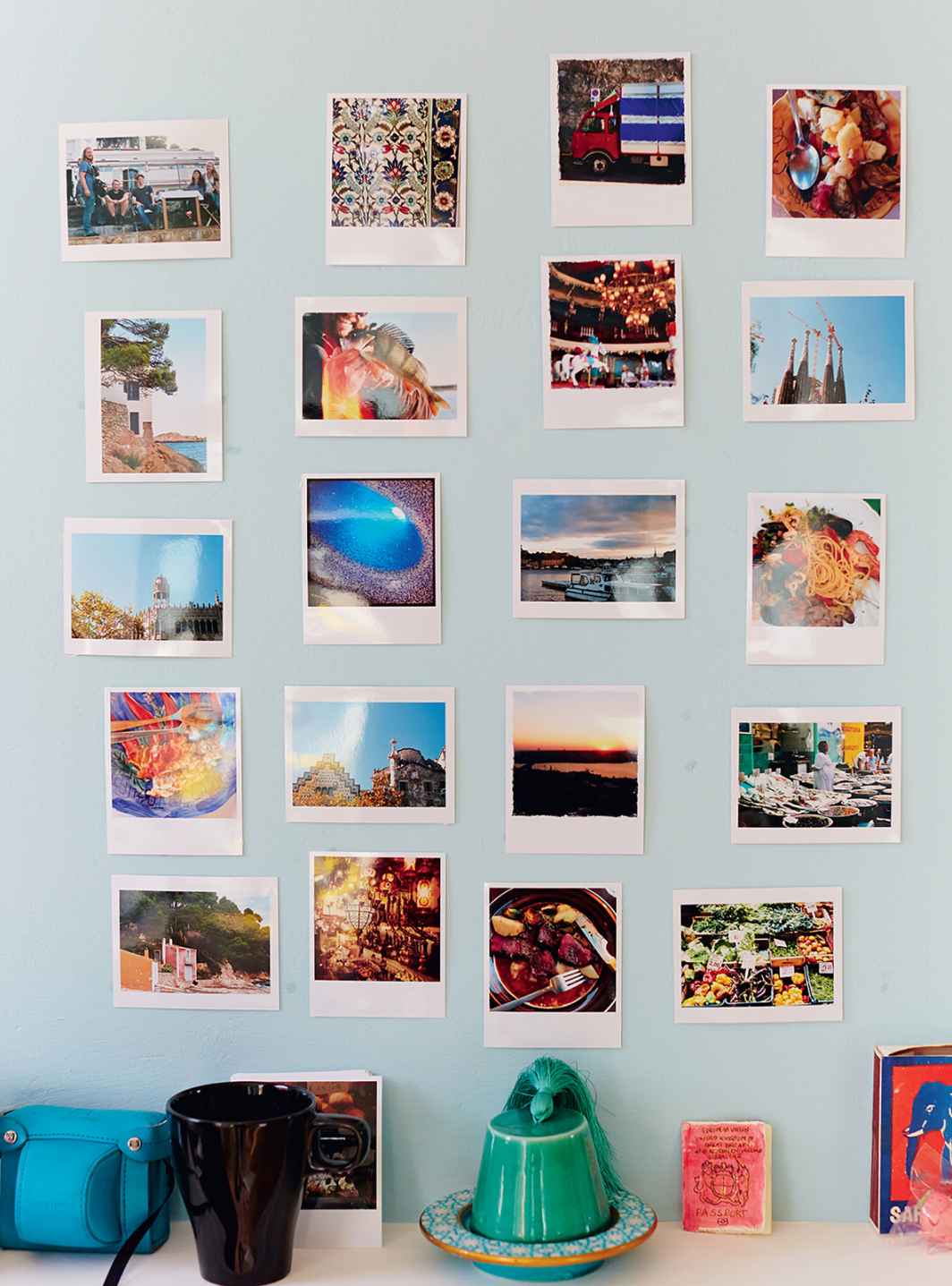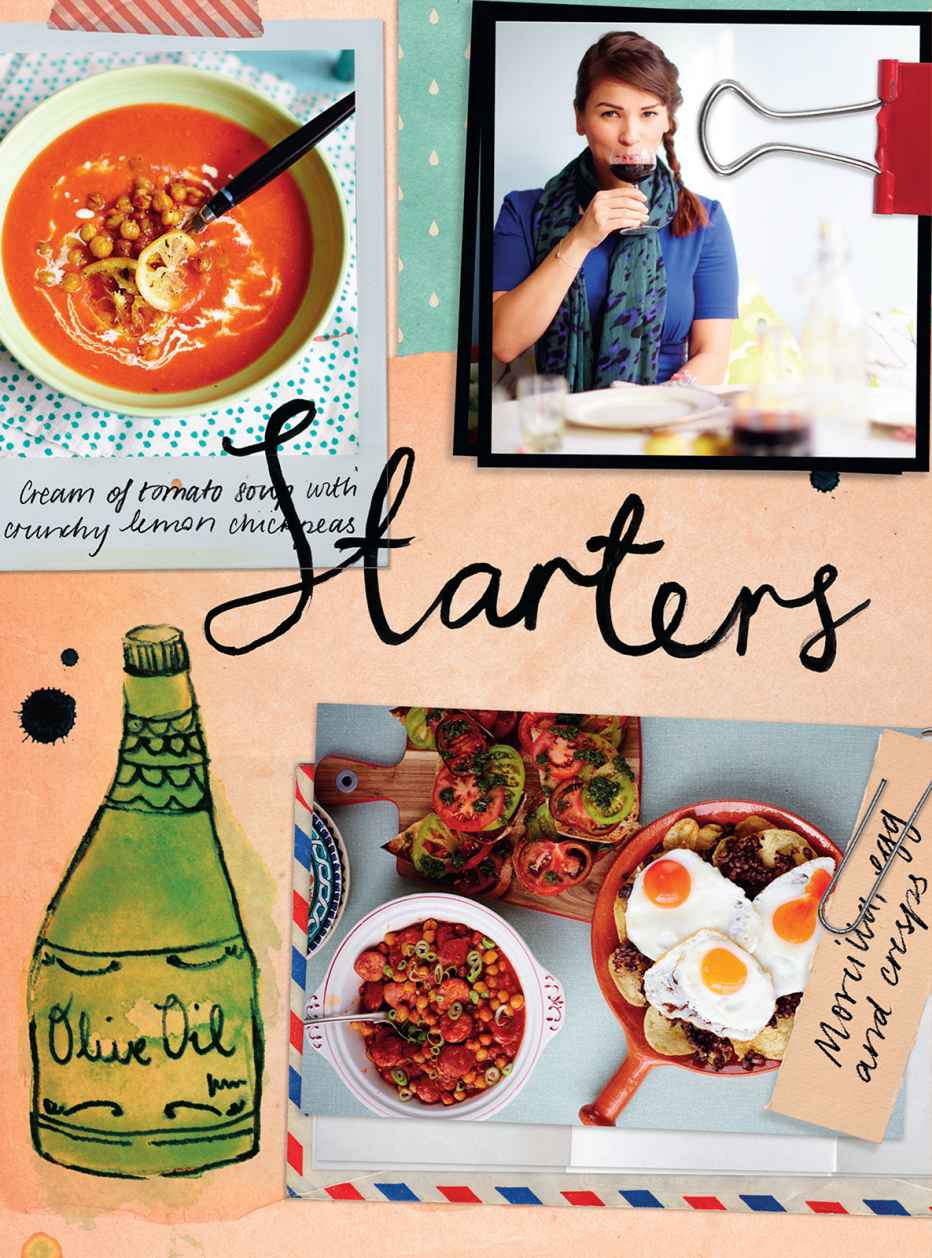Rachel Khoo
RACHEL KHOOS KITCHEN NOTEBOOK
Over 100 delicious recipes from my personal cookbook
Photography by David Loftus
Illustrations by Rachel Khoo
Contents
I carry a notebook everywhere, and it almost always ends up tattered, dog-eared and splashed with various food stains from eating my way around the world or cooking in my kitchen. The recipes, illustrations, kitchen titbits and tips that end up in my notebook are all something that I wanted to share. Recipes that reflect both my culinary past and my present, the places Ive been, my kitchen experiences a book that tells a story of how I cook in the kitchen.
After writing two cookbooks that chronicled my exploration of la cuisine franaise, I felt it was time to show my true colours with this book. My childhood played a big part in forming my culinary DNA, but the experiences and cultures Ive exposed myself to in my adult life have also been formative in the way my cooking style has evolved. The last several years have been packed tighter than a tin of sardines with adventures close to home and beyond. Ive visited an eclectic range of places, from the Scandi-cool Stockholm and the fragrant delights of the East in Istanbul, to the slightly rough-around-the-edges Naples, as well as rediscovering my home town, London, with its vibrant, energetic food scene.
Even though Ive lived in Paris for eight years, I am not that French woman off the telly, as Ive frequently been described since the Little Paris Kitchen TV show aired. Im quite proudly British (despite the many years of British food bashing I endured in France), with a colourful culinary heritage, thanks to my Malaysian dad and Austrian mum. Living in Bavaria as a teenager has also played its part. My taste buds were stimulated from a young age with spices, flavours and smells from South-East Asia, sweet and heart-warming dishes from Austria, as well as some British classics like roast beef andYorkshire puddings. Although I had a diverse culinary upbringing, my parents were not snobby when it came to food. They understood the importance of nutritious home-cooked food and the ritual of sitting down for a meal every day as a family, but the odd fast food treat or TV dinner was still allowed. My mum has always been a savvy shopper, never wasting a thing and ever-inventive with leftovers. Our so-called leftovers night, a common thing at home, would often look like the foodie equivalent of a United Colours of Benetton commercial, with schnitzel, shepherds pie, rendang curry and stir-fried rice all on the table at the same time. When I look back, I think my parents were unintended foodie visionaries with their leftover fusion food. Eating Austrian dumpling soup with some char siu roasted pork and pickled chillies was not unusual in the Khoo household, and this was back in the eighties, long before Korean tacos or kebab pizza were the norm.
I come from a creative background. I spent four years at art college, working on projects where the main objective was to communicate an idea through a particular medium, in my case graphic/web design and photography. I was initially drawn to food because its a way of expressing my creativity with an added tasty bonus. Since I started writing cookbooks, I feel like I have hit the jackpot. It combines many of my passions: creativity, socializing and eating!
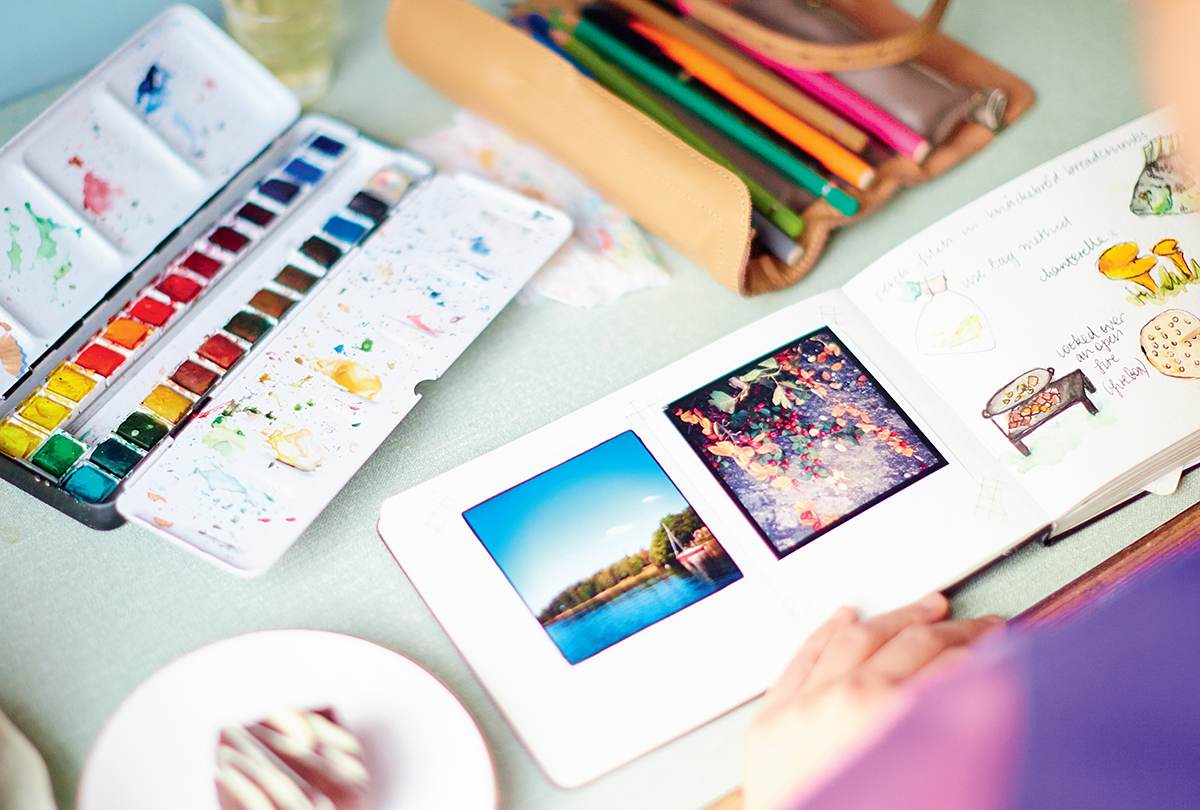
The way I go about creating a recipe book is similar to the creative practice I learnt at art college. Just like an art project, it all starts with hands-on research, initial ideas scribbled in my notebook, which evolve into experiments and then the final piece. I like to travel, to meet people, to experience the food, the culture, the flavours, sights, sounds and smells first-hand, gathering the inspiration and research to feed my brain and tummy with ideas. Those ideas end up being an initial scribble and sketch in my notebook. Then, when it comes to taking the sketch from concept to recipe creation, chaos ensues in the kitchen, with pots, pans and many ingredients being thrown around. More often than not, the recipe does not turn out quite the way I imagined on paper. However, even the failures are usually successes: I might discover a new flavour combination, or texture, or cooking technique. If its really a total disaster, it ultimately helps me to write a better recipe, as Ill then understand better what can go wrong in the kitchen. I always believe that failures are part of the process. Its how you deal with them that will eventually influence whether you succeed or not.
The famous communication philosopher Marshall McLuhan once said that the medium is the message. A cookbook has a tactile and personal element that a recipe on a tablet or TV show cant have. Reading a tablet in the bathtub is a little more risky than reading a book. But this goes beyond the physical object for me. I think of a recipe as a little snapshot of what Ive experienced, and putting them together in a book is like collating a personal culinary diary.
Its a time-consuming process, but I love every part of it, from the research, recipe development and writing about my personal stories, to the photo shoot, where the book begins to take a visual shape. Writing a book may start off as a solitary activity, but the more the book progresses, the more essential it is to work with people you admire and find inspiring (more about them in the Acknowledgements). They all play a part in pushing me as a food writer and making the book the best it can be.
My ideas start with a taste, a flavour and a sketch in my kitchen notebook, then evolve from experiments in my kitchen back into the book and eventually (I hope!) to your kitchen and your mouths. My culinary holy grail is to find my cookbook on your bookshelf with greasy fingerprints, food-stain splatters and your own personal scribbles on the recipes.
This book is a collection of recipes that were inspired by my travels, adventures and food experiences, which I hope, ultimately, inspire you to cook!
. I often opt for a selection of starters rather than one main course when I eat out. Im never happy with just one plate of food; I like to try lots of different things and with small dishes I can leave the restaurant without feeling like I need a forklift truck to take me home. Since I began developing recipes for a living, I often also find myself having a starter as a lunch or light dinner, and sometimes even for breakfast or perhaps thats just my Asian heritage coming to light.

